The world's first tanks: the birthday of the car of death
A tank is an armored vehicle with weapons, and by the first quarter of the 20th century, when the tank was born, there was nothing fundamentally innovative about this car. The advantages of being on the battlefield of a well-defended combat unit, be it the Roman “turtle” or the heavy cavalry of the medieval West forged in armor, were appreciated even in pre-industrial times. The first car, the Cugnot steam wagon, was built before the French Revolution. So, theoretically, a certain prototype tank could also participate in the Napoleonic wars. However, by that time everyone had forgotten about shields and armor a long time ago, and the crawling cart slower than a pedestrian could not be compared with the swiftness of cavalry.
Machine gun argument
When, after a world that lasted half a century in Western Europe, a big war suddenly broke out, many at first did not understand that a terrible slaughter was coming, a little like the battles of the times of Austerlitz and Waterloo. But something happened that had never happened before: on the Western front, the belligerents, unsuccessfully trying to get around each other from the flanks, built a solid front line from Switzerland to the North Sea. In the middle of 1915, the British and French on one side and the Germans on the other side entered a hopeless position clinch. Any attempts to break into the ground, hidden in the pillboxes, enclosed with barbed wire, echeloned defense forced the attackers to wash with blood. Before sending the infantry to the attack, alien trenches, of course, diligently processed artillery, but no matter how dense and crushing its fire, it was enough to survive a pair of machine guns so that they successfully threw the chains of attackers onto the ground. The infantry in the offensive obviously needed serious fire support, it was necessary to promptly detect and suppress these machine guns. Then it was time for the tank.
Those who would like to feel like the first tankers and dive into history tank building
will be able to do this in the game World of Tanks, when in September there will be a special mode with the legendary Mark IV.
It cannot be said that before the appearance of a tank on the battlefield, nothing in this sense was undertaken. For example, they tried to arm and book cars. But even if the low-power machines of those times were able to withstand the weight of armor and weapons, it was extremely difficult for them to travel off-road. But the "no man's land" between the first rows of the trenches was not specially prepared for car traffic by anyone, moreover, it was rather dug up with explosions of shells and mines. We had to work on the cross.
In the 19th century, several British and Russian inventors, in particular, Dmitry Zagryazhsky and Fyodor Blinov, offered their designs to the caterpillar engine. However, the ideas of Europeans were brought to commercial realization on the other side of the Atlantic. One of the pioneers of the American tracked vehicle was the company of Benjamin Holt, who in the future renamed herself Caterpillar.
It all came up with Churchill ...
Holt tractors were not unusual in Europe at the start of the war. As tractors for artillery guns, they were actively used, in particular, in the British army. The idea of turning the Holt tractor into an armored vehicle on the battlefield came in 1914 to Major Ernest Dunlop Swinton, one of the most ardent supporters of what would be called a “tank” in the future. By the way, the word "tank" (English "tank") was coined as the code name for a new car in order to mislead the enemy. The official name at the time of the launch of the project was Landship - that is, "land ship." It so happened because Swinton’s idea was rejected by the general army leadership, but the first Admiralty Lord Winston Churchill decided to act at his own risk and take the project under his wing fleet. In February 1915, Churchill created the Committee for Land Ships, which developed the terms of reference for an armored fighting vehicle. The future tank had to reach speeds of up to 6 km / h, overcome pits and ditches with a width of at least 2,4 m, climb climbers up to 1,5 m high. Machine guns and light artillery were offered as armaments.
Overview for the commander and driver
opened through slots protected by two steel plates.
Interestingly, the idea of using a chassis from a Holt tractor was abandoned as a result. French and German designers built their first tanks on this platform. The British, on the other hand, gave the development of the tank to the company from William Fosters & Co. Ltd., which had experience in creating agricultural machinery on tracked vehicles. The work was carried out under the leadership of the chief engineer of the firm, William Tritton, and the mechanical engineer attached to the military department, Lieutenant Walter Wilson. They decided to use an extended tracked chassis from another American tractor, the Bullock. True, the tracks had to be seriously strengthened, making them completely metal. A box-shaped metal body was placed on the tracks, and it was supposed to raise a cylindrical tower on it. But the idea did not work: the tower shifted up the center of gravity, which threatened to overturn. At the back, an axle with a pair of wheels was attached to the tracked platform - a legacy inherited from civilian tractors. If necessary, the wheels were hydraulically pressed to the ground, lengthening the base when passing bumps. The entire structure was pulled by a 105-horsepower Foster-Daimler engine. The Lincoln 1 prototype, or Little Willie, was an important step in tank design, but left some questions unanswered. First, if there is no tower, where should the weapons be placed? Let's remember that the first British tank was developed under the supervision of the Navy, and ... a purely naval solution was found. Weapon decided to place in sponsons. This is a maritime term meaning laterally protruding structural elements of a ship in which weapons are located. Secondly, even with the elongated chassis from the Bullock, the prototype did not fit into the specified parameters for the passage of irregularities. Then Wilson came up with an idea that later turned out to be a dead end, but this time it determined British priority in tank building. Let the body of the combat vehicle become diamond-shaped, and the caterpillars rotate around the entire perimeter of the diamond! Such a scheme allowed the car to roll over obstacles. On the basis of new ideas, a second car was built - Big Willie, nicknamed Mother (born “mother”). This was the prototype of the first Mark I tank in the world, which was adopted by the British Army. “Mother”, as it should be, gave birth to heterogeneous offspring: the “male” tank was armed with two 57-mm naval guns (and again naval influence!), As well as three 8-mm machine guns - all Hotchkiss weapons. There were no guns on the "female", and the machine-gun armament consisted of three 8-mm Vickers and one Hotchkiss.
The first tank has incorporated a number of solutions
borrowed from the navy. It was equipped with a wooden "deck" and sponsons to place guns. Actually, the official name of the tank MK1 was Landship - “land ship”
Flour of the first tank crews
“The undercarriage and power plant of the Mark I tank,” says Fyodor Gorbachev, a historical consultant at Wargaming, “made it possible to move around the battlefield off-road, to overcome barbed wire obstacles and trenches up to 2,7 m wide - this set the tanks apart from their modern armored vehicles. On the other hand, their speed did not exceed 7 km / h, the lack of suspension and damping means made them a rather unstable artillery platform and complicated the work of the crew. According to Tanks Driver's Handbook, there were four ways to turn the tank, while the most common and sparing for mechanisms required the participation of four crew members in this process, which affected the vehicle's maneuverability not in the best way. The armor provided protection against hand-held firearms and shrapnel, but was penetrated by armor-piercing “K” bullets (massively used by the Germans since the summer of 1917) and artillery ”.
The world's first tank, of course, was not an example of technical excellence. It was created in unrealistically short time. Work on an unprecedented combat vehicle began in the 1915 year, and on September 15 the 1916s were used for the first time in battle. True, Mark I still had to be delivered to the battlefield. The tank didn’t fit into the railway dimensions - they interfered with “cheeks” -sponsees. They, each weighing 3 tons, were carried separately by trucks. The first tankers remembered how they had to spend sleepless nights on the eve of the battle, screwing sponsons to combat vehicles. It was solved only in the Mark IV modification, where they were pushed into the hull. The tank crew consisted of eight (less often nine) people, and for such a large crew there was not enough space. In the front part of the cabin there were two chairs — the commander and the driver; them in the aft were two narrow passage, bypassing the shroud that covered the engine. The walls of the cabin was used as lockers, which removed the ammunition, spare parts, tools, supplies drinking and eating.
The Germans ran
“In the first battle, with Flers-Courcelette, the Mark I tanks achieved limited success and failed to break through the front, but the effect they had on the fighting sides was significant,” says Fyodor Gorbachev. - The British in one day September 15 advanced deep into the enemy's defense by 5 km, and with losses in 20 times smaller than normal. Cases of the unauthorized abandonment of trenches and flight to the rear were recorded on the German positions. On September 19, the commander-in-chief of the British forces in France, Sir Douglas Hague, asked London to provide more 1000 tanks. Undoubtedly, the tank justified the hopes of its creators, despite the fact that it was quickly pushed out of combat units by the heirs and was later used for training crews and in secondary theaters of military operations. ”
It cannot be said that it was the tanks that changed the course of the First World War and tipped the scales in favor of the Entente, but you should not underestimate them either. Already in the Amiensk operation 1918 of the year, which led to the breakthrough of the German defense and in fact to the imminent end of the war, hundreds of British Mark V tanks and more advanced modifications took part. This battle became the forerunner of the great tank battles of World War II. The British diamond-shaped “Stamps” made war in our country during the civil war. There was even a legend about the participation of Mark V in the battle for Berlin, but later it turned out that Mark V found in Berlin was stolen by the Nazis and taken to Germany from Smolensk, where he served as a memorial in memory of the civil war.
The tank did not bring a radical change in the fighting
World War I, but turned out to be a serious support for the advancing infantry in the context of a positional crisis.
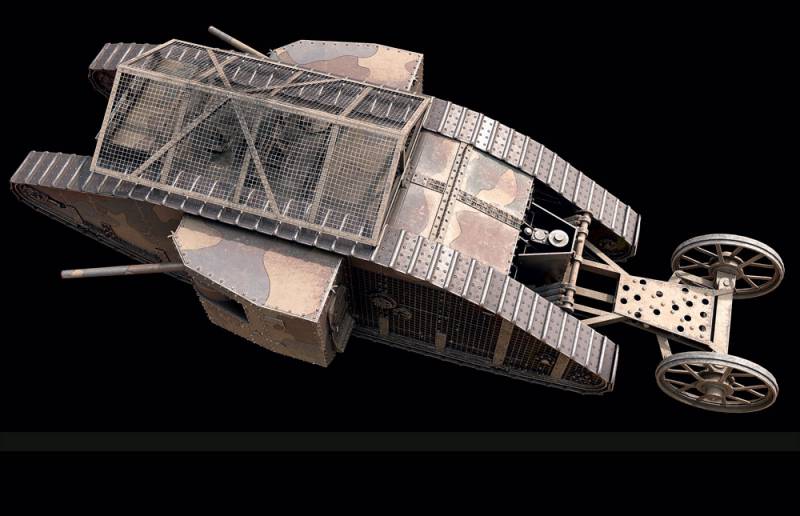
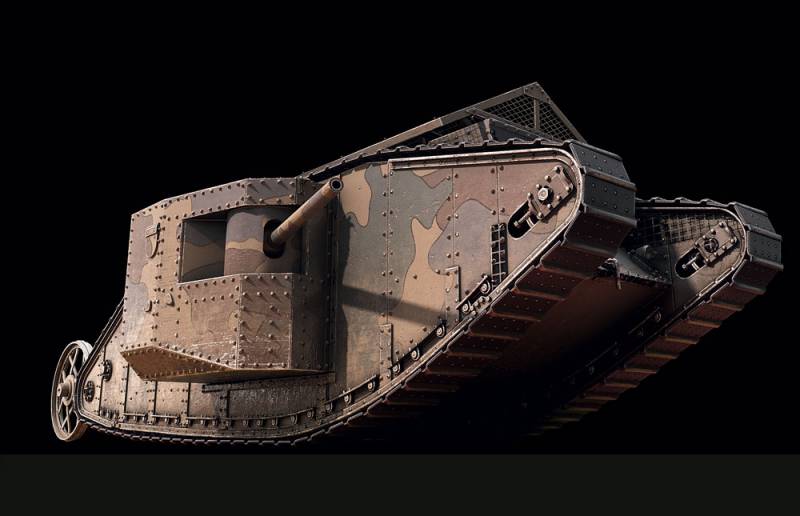
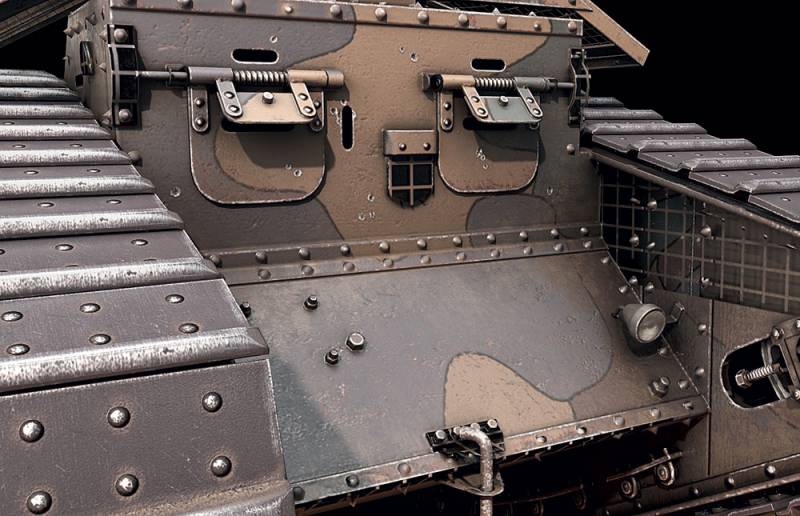
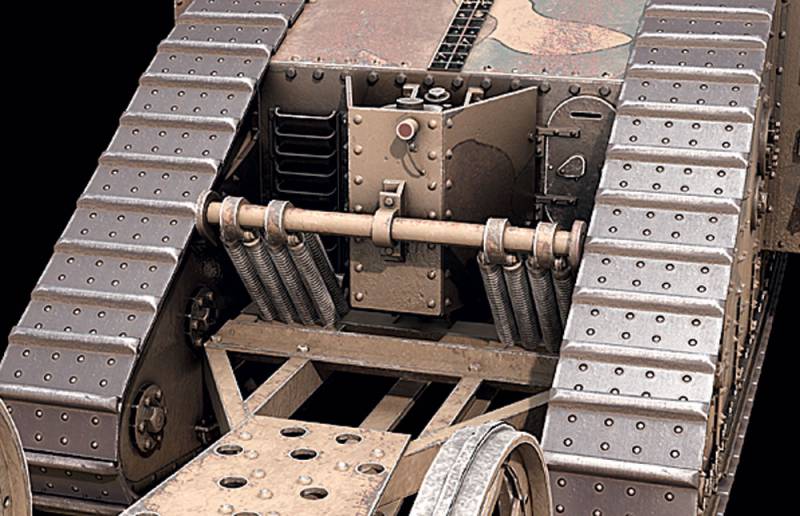
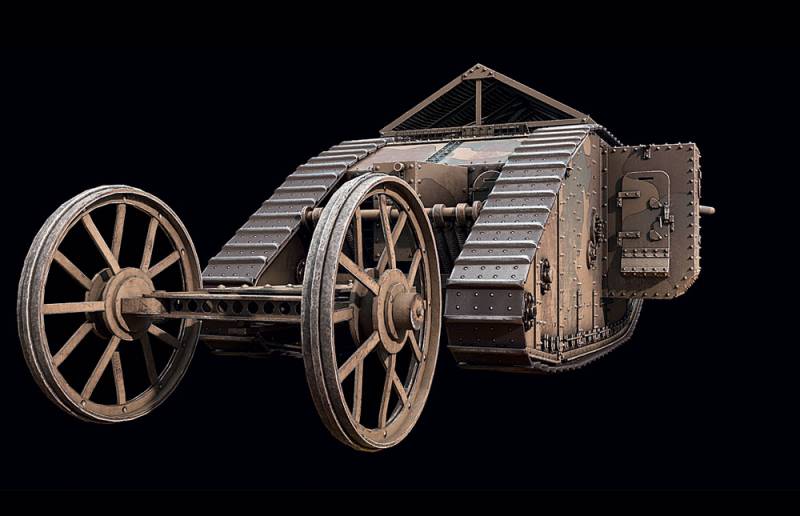
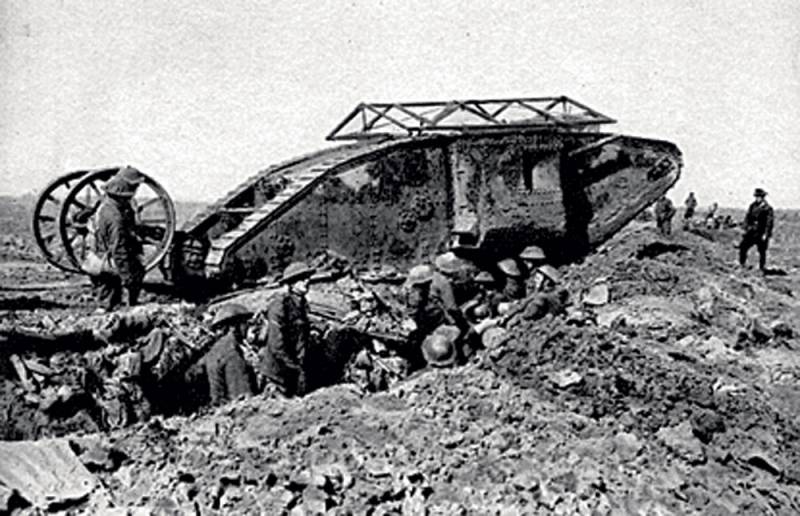
Information